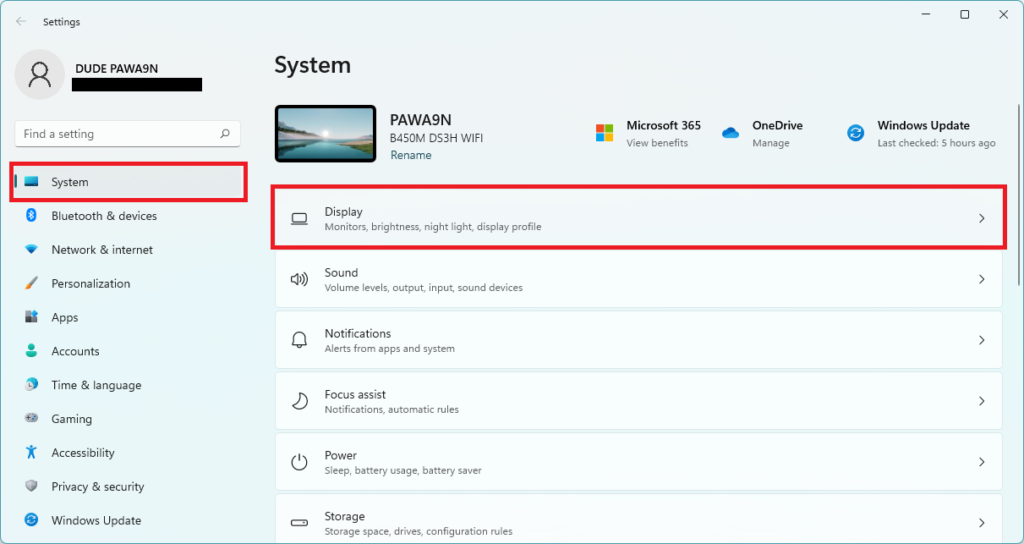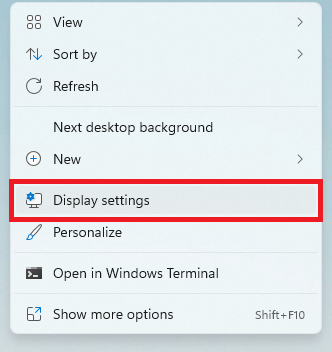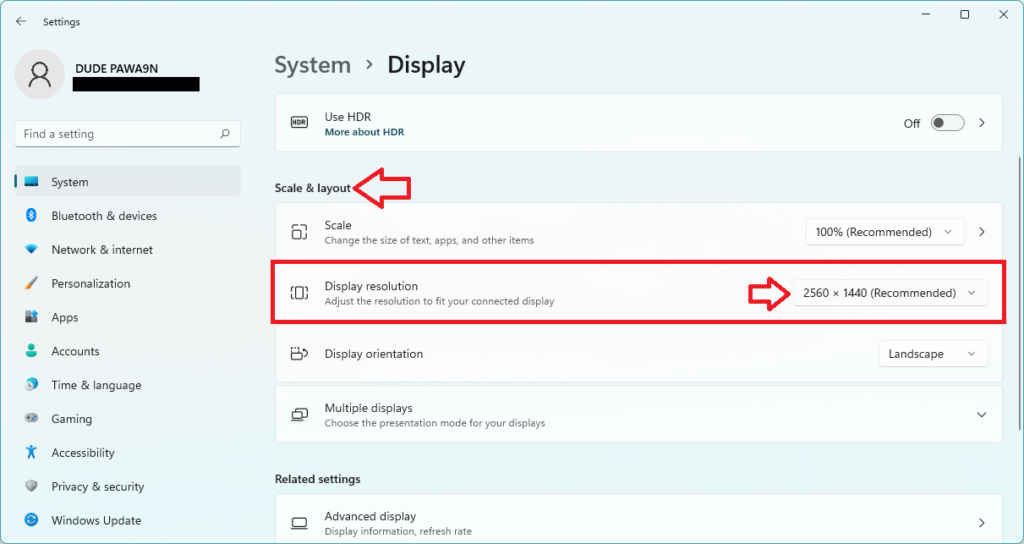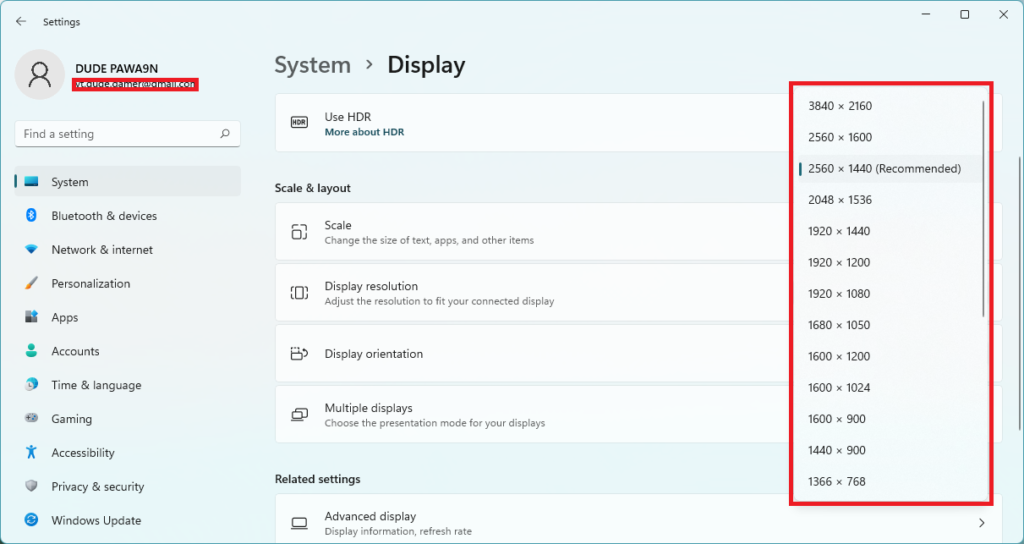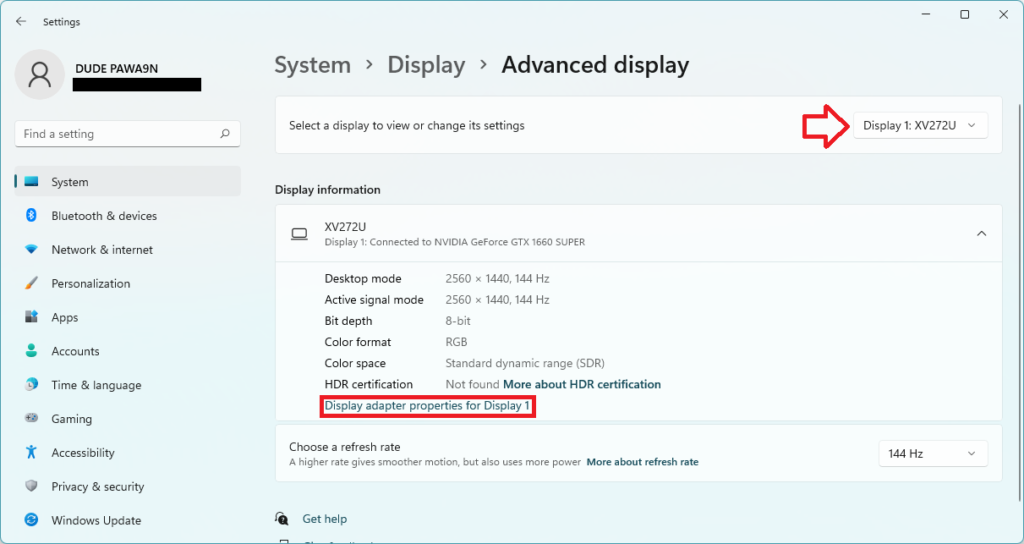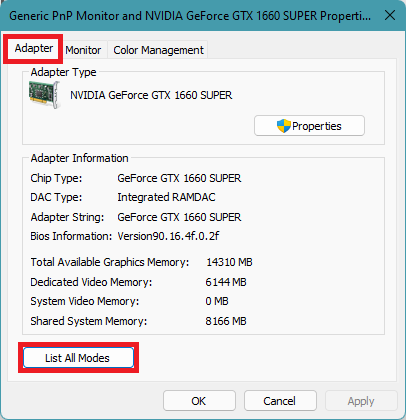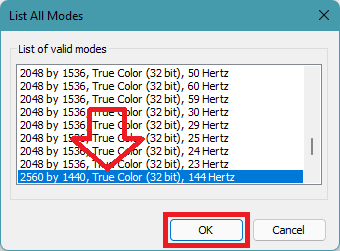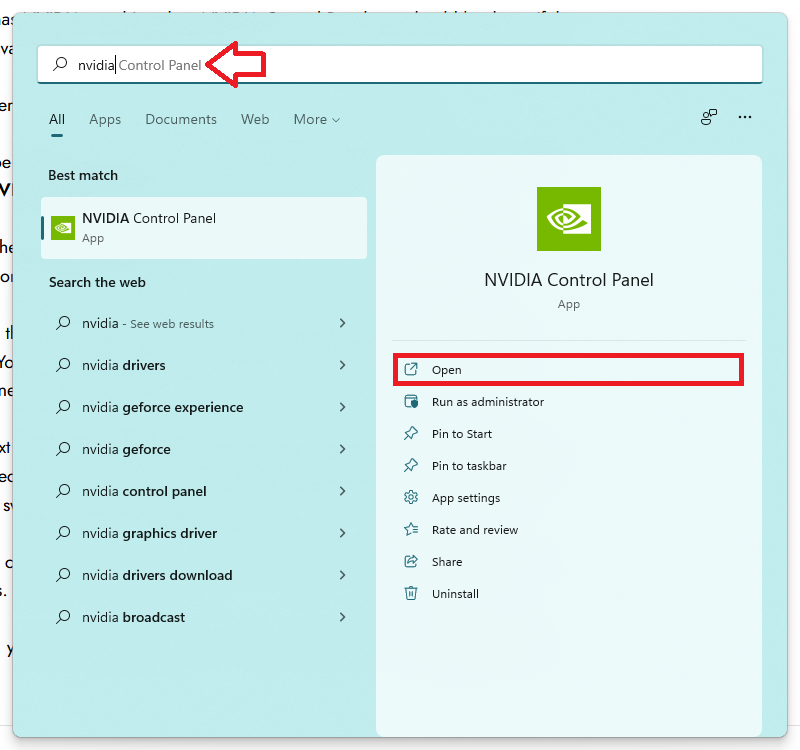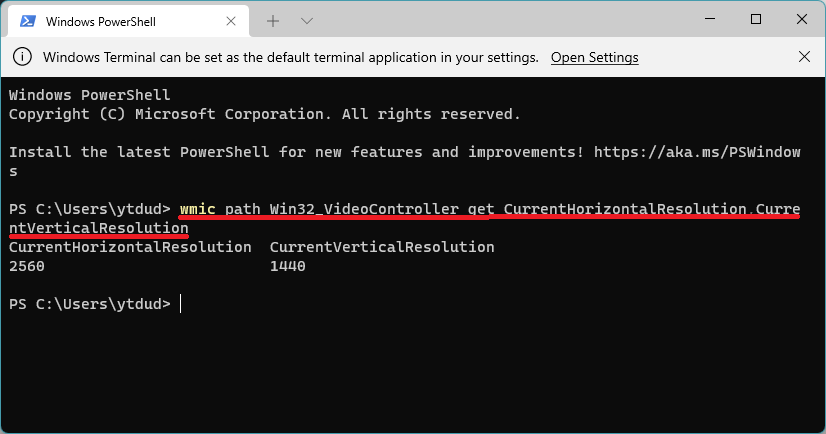Change Display Resolution in Windows 11
There are as many as four ways to change screen resolution in Windows 11: From the Settings app, from advanced display settings, using the Graphics Control panel, or using Windows Terminal. I have provided a step-by-step process to change display screen resolution using all these methods. Go ahead follow the technique that feels convenient to you. Also Read: How to Fix the Windows 0x0 Error
1. From Settings
The easiest way to change screen resolution in Windows 11 is from the settings app. Microsoft has added the option to change the resolution right in the built-in settings app. Step 1: Press Windows Key + I on your keyboard to open the Settings app. You can also open settings by right-clicking the start button and tapping on Settings, or searching Settings in the search bar. Step 2: In the Settings app, tap on System on the left side. Under System settings, tap on Display. Alternatively, you can right-click on any blank space on the Desktop and tap on Display settings to get directly on the Display settings page. Step 3: In the Display settings, scroll down to Scale & layout section. Under the Scale & layout section, you will find Display resolution settings. It will be showing the current resolution of the Display. Step 4: Tap on the drop-down arrow right to the current screen resolution. Now a list of different available resolutions of your Display will appear. The system also marks the best possible resolution for your Display as recommended. Select the resolution as per your requirement. Step 5: After selecting the new Display screen resolution, you will get a prompt Keep these Display settings with two buttons, Keep changes and Revert. Tap on Keep changes to save the newly selected screen resolution. That’s it. You have successfully changed screen resolution in Windows 11.
2. From Advanced Display Settings
The way mentioned above is not the only method to change the screen resolution using the settings app. You can also change screen resolution from advanced display settings. Follow the below steps to set a new screen resolution on your PC. Step 1: Open the Settings app on your PC and tap on System on the left side. Under System settings, tap on Display. Step 2: In the Display settings, scroll down to the Related settings section. Under Related settings, you will find the Advanced display option. Tap on the arrow icon next to the Advanced display to expand it. Step 3: Under the Advanced display settings, select the display you want to change the screen resolution. If you are doing it on a laptop, you will most probably have only the Internal Display connected to it, and it will be set as Display1: Internal Display. Step 4: Scroll down to the Display information section and tap on Display adapter properties for Display 1. Step 5: By default, you will land on the Adapter tab. From there, tap on the List All Modes button. Step 6: Now, a list of all valid modes for your PC will appear on the screen. Scroll through the list and select a resolution from it. Once done, tap on OK, and then on the Adapter tap. Don’t forget to tap on Apply. Step 7: Lastly, you will get a confirmation prompt tap on the Keep changes button to apply the selected screen resolution. This is how you can change screen resolution from Advanced display settings in Windows 11
3. From Graphics Control Panel
You can change screen resolution on your Windows 11 PC using the Graphics Control Panel of your Graphics provider company. I have provided steps for changing the screen resolution using Intel Graphics Command Center and NVIDIA Control Panel. Follow the steps depending on the graphics card of your PC.
Intel Graphics Command Center
Your PC must have a Graphics Card, whether from Intel or NVIDIA. If a PC has Intel Graphics, it will have an Intel Graphics Command Center app. Follow the below steps to know how you can change the screen resolution using the Intel Graphics Command Center app. Step 1: Press the magnifying icon next to the Start button in the Taskbar to open Search. Step 2: Type Intel Graphics Command Center in the search and click on the best result to open the Intel Graphics Command Center app. Step 3: In the Intel Graphics Command Center app, tap on Display on the left side. Step 4: You will land on the General tab under Display settings. The very first option in the General tab will be Resolution. It will show the current resolution of the screen. There will be a drop-down arrow right to the present resolution. Tap on it. Step 5: Now, a list of all the available resolutions for your Display will appear on the screen. Select the resolution as per your requirement. If you get a confirmation prompt after selecting the resolution, tap on the Keep changes button. This is how you can change screen resolution using the Intel Graphics Command Center app.
NVIDIA Control Panel
If your PC has NVIDIA graphics, then NVIDIA Control Panel app should be there. If the app is not available, you can download it from here. Step 1: Open Search by pressing the magnifying glass in the taskbar. Step 2: Type NVIDIA Control Panel in the search and double click on the best match to open the NVIDIA Control Panel app on your Windows 11 PC. Step 3: In the NVIDIA Control Panel app, tap on Display on the left sidebar. Under Display tap on Change resolution. Step 4: On the Change resolution page, select the display you want to change the resolution. You can skip this step if your system has only the Internal screen and you haven’t connected any monitor to it. Step 5: Next up, tap on the drop-down menu icon below resolution under Choose the resolution section. A list of all the available resolutions will appear; select the resolution you want to switch to and tap on the Apply button. Step 6: If a confirmation prompt appears on the screen, tap on Apply Changes to save the changes. Once done, you have successfully set a new screen resolution using NVIDIA Control Panel app.
4. Check Screen Resolution Using Windows Terminal
I know many of you love using commands on your PCs. All of you guys can check the screen resolution of your Windows 11 PC using Windows Terminal. Follow these steps to review and change screen resolution using the Terminal app. Step 1: Tap on the magnifying glass to the Start Button to open the search bar. Type Windows Terminal in the search bar and double click on the best match to launch Windows Terminal on your PC. Alternatively, right-click on the start button in the taskbar or press Windows key + X to bring the Quick links menu. In the Quick links menu, tap on Windows Terminal to launch it. Step 2: In Windows Terminal, copy and paste the below command and press enter. wmic path Win32_VideoController get CurrentHorizontalResolution,CurrentVerticalResolution Step 3: Running this command will show you the current screen resolution of your Windows 11 PC. I know you will only be able to see the screen resolution by running the above command. But once you know the current set resolution, you can always follow the other methods explained above in this article to set a new display resolution. How do I change screen resolution in Windows 11? You can change screen resolution in Windows 11 from the settings app. Microsoft has added the option to change screen resolution under Display settings. Right-click anywhere on Desktop and tap on Display settings. Scroll down to the scale & layout section and change screen resolution. How do I change my screen Resolution to 1920X1080? You can change your screen resolution to 1920×1080 from the Windows settings app. Type Windows Key + I to open the Settings app and head over to display settings. Scroll down to the scale & layout section and select 1920×1080 as your new Display resolution.
Final Words
Undoubtedly, Screen Resolution is an essential aspect of a Display. It decides how text and images will look on the screen. If you are struggling with the current resolution of your Display, then it is worth changing the screen resolution on your Windows 11 PC. There are many ways to change screen resolution in Windows 11. I have explained all the ways above in this article so you can easily set a new resolution for your Display. Which method would you like to follow for changing the screen resolution? Please drop a comment below and let us know.

